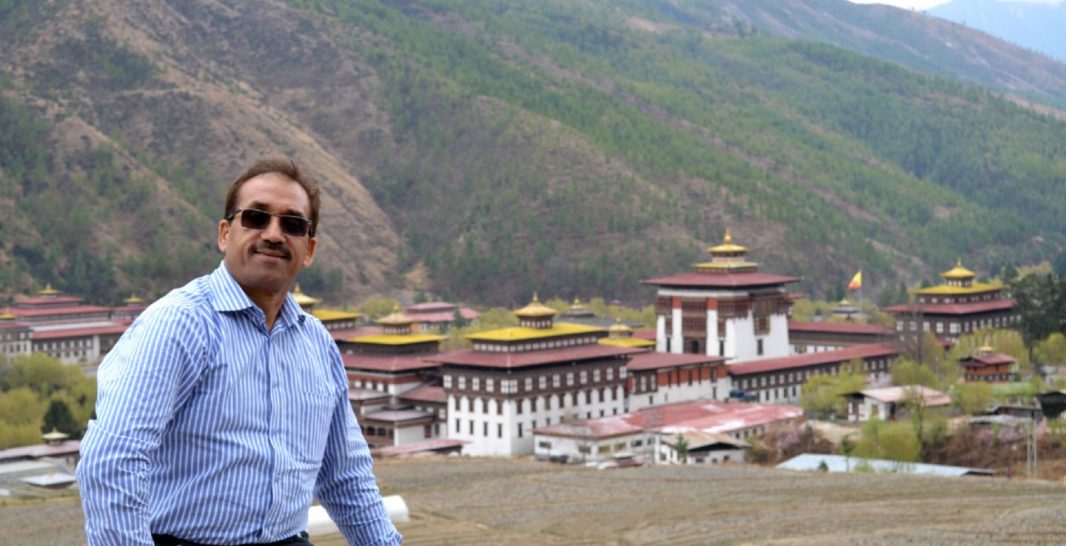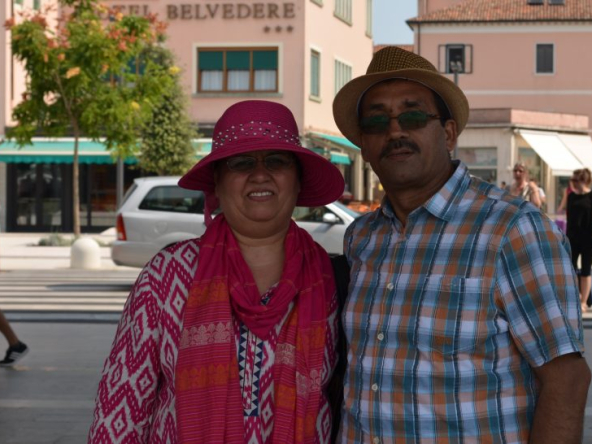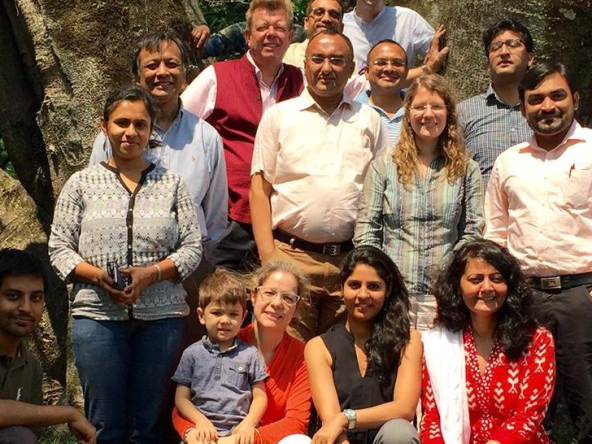A Smooth Start and Visa Adventures
Commencing my trip from Islamabad, Pakistan, my colleagues and I took a flight to Bangkok, Thailand, en route to Thimphu. Anticipating the possibility of flight delays due to the region’s weather conditions, we wisely secured a transit stay in a budget-friendly hotel in Bangkok. Our connecting flight with the esteemed Druk Air; Royal Bhutan Airlines was scheduled for the next day. Thankfully, we reached our destination on time, avoiding any travel disruptions.
Securing a visa for Bhutan proved to be a challenge for Pakistani nationals like me. Fortunately, the local Chamber of Commerce officials, affiliated with FNF, assisted in arranging our visas. The visa approval process, verified at the Bangkok airport, granted us the privilege of boarding. Unlike Pakistani nationals, Indian, Bangladeshi, and Maldivian citizens can acquire visas upon arrival by presenting a valid passport. Indian nationals also have the option of using their Voter Identity Cards. Meanwhile, other international tourists must obtain visa clearance before embarking on their Bhutanese journey.
Bhutan’s Identity: Culture, Language, and Religion
With a population of approximately 797,765 (as per a 2016 world report), Bhutan exudes a distinct identity. The official currencies are the Indian Rupee and the Bhutanese Ngultrum. Dzongkha serves as the official language, although Hindi is widely spoken in urban areas. As a Buddhist nation, Bhutan embraces religious freedom, safeguarded by the King.
A Majestic Arrival and Captivating Stay
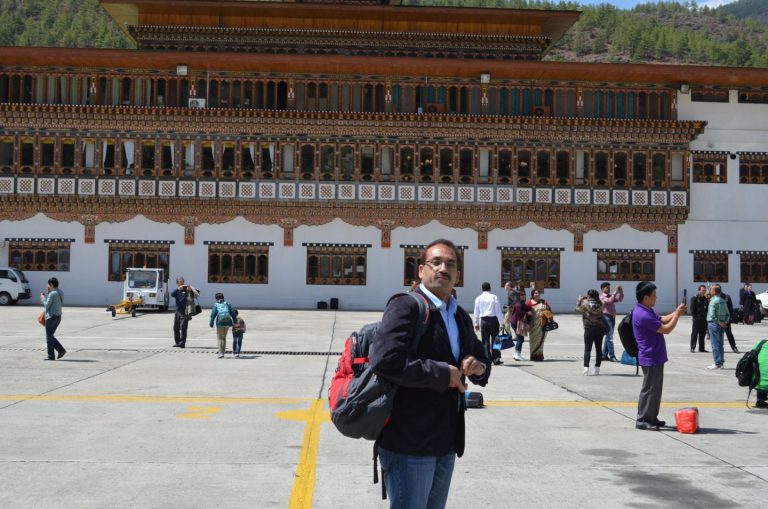
Upon landing at Paro International Airport, a breath of fresh air welcomed us, accompanied by intricate local craftsmanship evident in the airport’s architecture. Passengers, captivated by the scenic beauty, couldn’t resist capturing the moment with photographs. The journey from Paro to Thimphu, spanning around an hour’s drive, unveiled the splendour of Bhutan’s capital city. Our accommodation and conference arrangements were hosted at the luxurious Taj Tashi Hotel, known for its exceptional quality albeit at a premium cost.
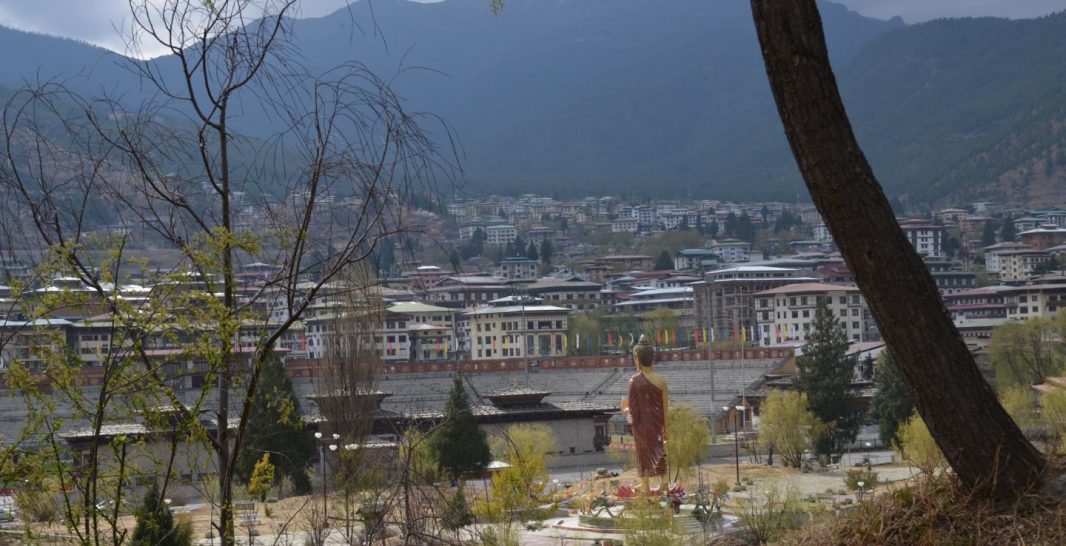
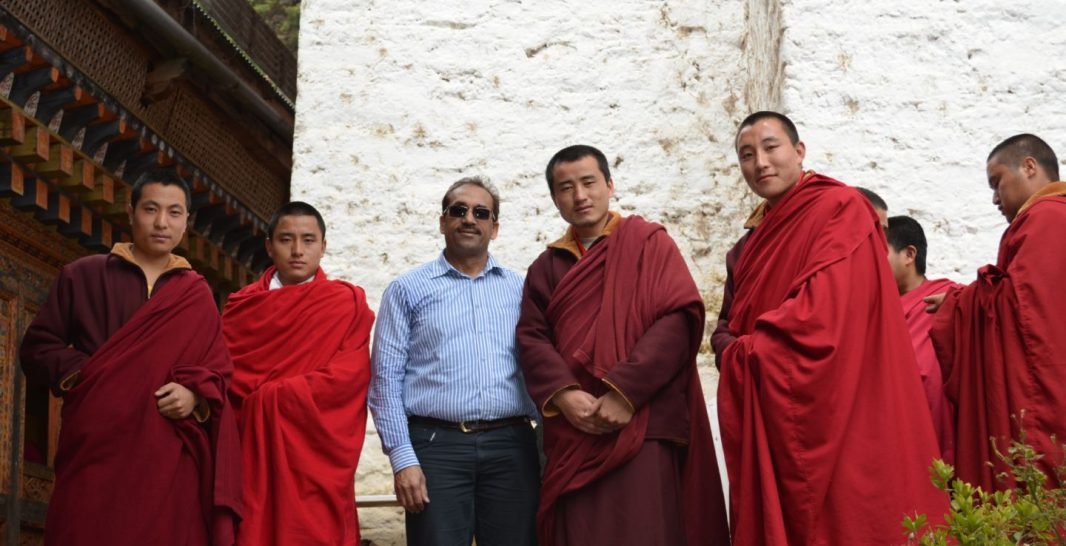
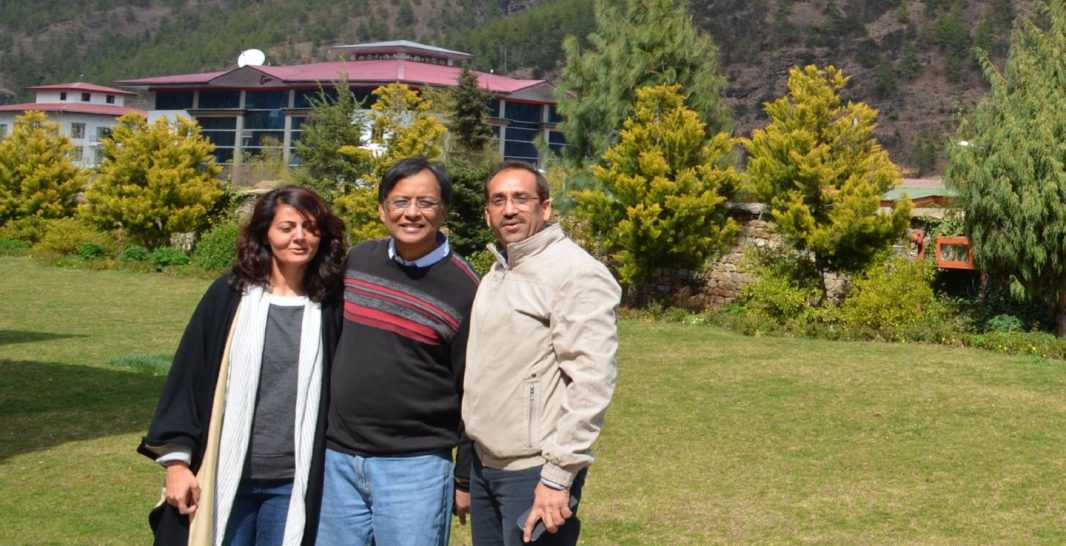
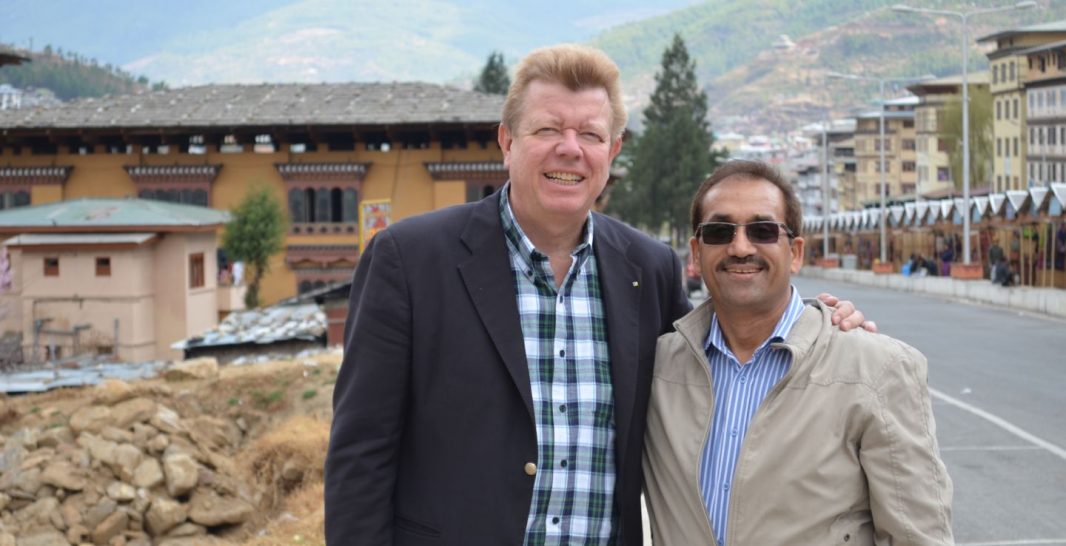
Exploring Thimphu’s Treasures
 Beyond the official conference proceedings, we seized the opportunity to explore Thimphu and its environs. Mobile SIM cards were easily obtainable from local shops, while the hotel offered complimentary Wi-Fi. A distinctive aspect of Thimphu is its absence of traffic signals. Instead, two vigilant policemen orchestrate the traffic flow in the heart of the city.
Beyond the official conference proceedings, we seized the opportunity to explore Thimphu and its environs. Mobile SIM cards were easily obtainable from local shops, while the hotel offered complimentary Wi-Fi. A distinctive aspect of Thimphu is its absence of traffic signals. Instead, two vigilant policemen orchestrate the traffic flow in the heart of the city.
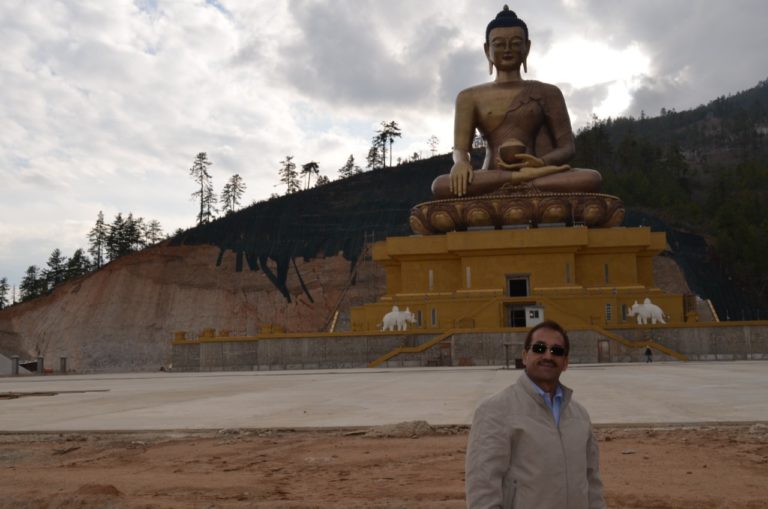
Monumental Wonders: Buddha Dordenma and the National Animal
A short taxi ride of around four to five kilometres led us to the Great Buddha Dordenma. This monumental Shakyamuni Buddha statue, nestled amidst Bhutan’s mountains, stands at an imposing height of 51.5 meters, ranking among the world’s largest Buddha statues. The project’s cost exceeds US$100 million.
The Takin, Bhutan’s National Animal, holds a special place in the country’s cultural and religious history. To witness this unique creature, we embarked on a taxi ride followed by a one-kilometre hike due to the hilly terrain.
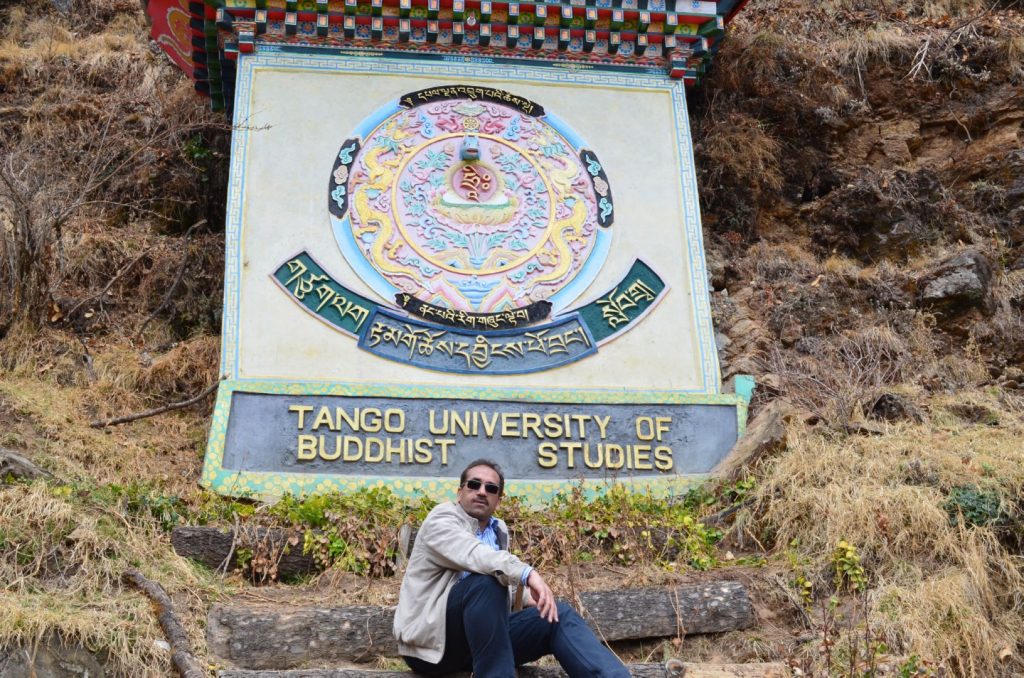
Venturing to Tango University of Buddhist Studies
With an additional day in our itinerary, my colleague Aamir Amjad and I seized the chance to explore further. Our destination was the Tango University of Buddhist Studies, perched atop a hill. Accessible solely through a 45-minute uphill hike, this institution is one of Bhutan’s six universities. Each university specializes in distinct fields, such as
religion, medicine, and humanities. Graduating from this university necessitates three years, three months, and three days of meditation—a remarkable commitment.
During our hike, we encountered a Canadian couple who had once lived in Karachi during the 1960s, sparking unexpected connections across cultures.
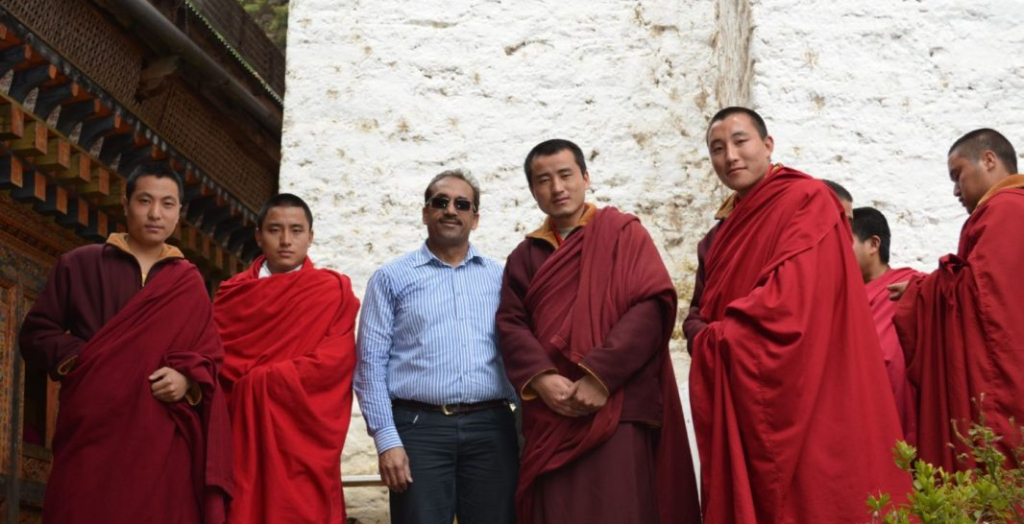
The Essence of Thimphu: Happiness, Respect, and Conservation
Thimphu’s residents notably rank high in global happiness indicators, a testament to their contented way of life. This sentiment was palpable as we explored the city’s shops, where depictions of the King adorned storefronts. The King’s interactions with citizens, including casual conversations with children, underscored the profound respect and trust citizens hold for their monarch. Thimphu’s inhabitants proudly wear traditional attire that reflects their heritage.
Bhutan’s commitment to environmental preservation is reflected in its legislation, ensuring at least 60% forest cover for perpetuity. Presently, over 72% of Bhutan’s land area is forested, with around 60% designated as protected areas, encompassing national parks and sanctuaries.
A Return with Cherished Memories
Our visit to Thimphu culminated in a collection of cherished memories. While official meetings constituted a significant portion of our trip, the chance to experience Bhutan’s captivating landscapes and rich culture remains unforgettable.
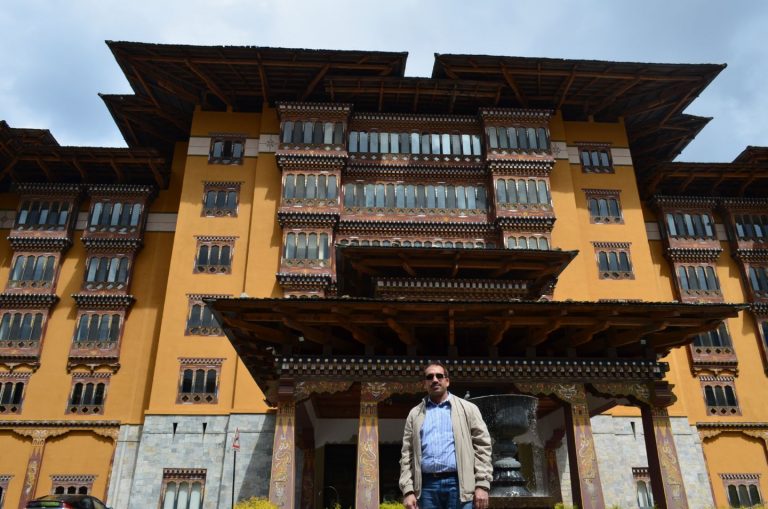
Explore more on my personal blog as I delve into the captivating moments and insights gained during this remarkable journey. From the monumental Buddha statue to the heartwarming encounters with locals, Bhutan’s charm continues to resonate in my memories and reflections
